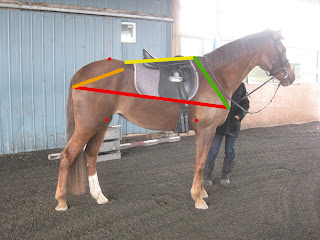Monday, May 27, 2013
Sunday, May 26, 2013
Horse and Pony
I am currently working on both the warmblood and pony resin masters. For comparison, here is a picture of them side by side.
Although neither horse looks like this anymore; they literally fell to pieces! Well Wagner did. He decided to dive off of a table and broke his front let. It turned out to be a happy accident since I was debating repositioning the front leg anyway and I figured since the front was off, might was well take the plunge and fix the back leg too.
As for Tristan, he lost his head. After putting a mane on him, he still looked to refined rather than thick and pony like. So his head is getting thickened and his neck is coming off and getting shortened. And his pasterns need to be fixed.
Wednesday, May 15, 2013
Sneaky Peak
Revisions to the Master Resin are well underway. I would like to paint him up for photos when his sales ad goes up. The resin's name is Wagner, but I think I will name this one The Master. I hope he doesn't hear drums...
Monday, May 6, 2013
Highland Pony Tristan
I have been working on a second model already. Tristan the Highland Pony Stallion. He has come along SOOO much easier than the canter warmblood. Its like he is sculpting himself :)
Thursday, May 2, 2013
Proportions and Percentages
When sculpting from a photo, the best way I know to accurately maintain proper proportions of the horse is to compare percentages. So for example I will measure the body length of the photo horse, from chest to rump, and then use that number as my main proportion to measure other body parts against. So if the body length is 6 inches and I measure the neck length at 3.5 inches; the percentage of neck length to body length is 58%. I make sure then that my model also has a proportion of 58% neck to body length.
To take things up a notch; lately over on the Hooves blog by Mercedes, she has been writing extremely educational posts about proportions, percentages and conformation of real horses. These measurements can easily be applied to model horses! Below is a photo of my canter warmblood (I really need a name for him!) with the main points and measurements marked as followed;
A: Point of the Wither
B: Point of the pelvis (innominate)
C: The Lumbo-Sacral Joint
D: Point of the Hip
E: Point of the Bum
F: Patella
G: Scapula/Humerus Joint
H: Elbow (Proximal end of the Radial-Ulna)
Red: Length of the body - from the end of the scapula to the end of the Pelvis
Orange: Length of the hip - between the points of the pelvis
Yellow: Length of the back - between the point of the withers and the lumbo-sacral joint
Green: Length of the shoulder - between the ends of the scapula
A lot of these points are hard to see in photos and I recommend poking a real horse to get a good idea of where these points are located as well as reading Mercedes' posts!
Here is what these points look like on a real horse for comparison.
The most important thing to remember as a sculptor is to check, recheck and then check again your percentages and proportions!!!
Recently Mercedes did an in-depth analysis on a readers horse. I wonder if she would be up for analyzing a horse model?
To take things up a notch; lately over on the Hooves blog by Mercedes, she has been writing extremely educational posts about proportions, percentages and conformation of real horses. These measurements can easily be applied to model horses! Below is a photo of my canter warmblood (I really need a name for him!) with the main points and measurements marked as followed;
A: Point of the Wither
B: Point of the pelvis (innominate)
C: The Lumbo-Sacral Joint
D: Point of the Hip
E: Point of the Bum
F: Patella
G: Scapula/Humerus Joint
H: Elbow (Proximal end of the Radial-Ulna)
The lines mark the following measurements;
Red: Length of the body - from the end of the scapula to the end of the Pelvis
Orange: Length of the hip - between the points of the pelvis
Yellow: Length of the back - between the point of the withers and the lumbo-sacral joint
Green: Length of the shoulder - between the ends of the scapula
A lot of these points are hard to see in photos and I recommend poking a real horse to get a good idea of where these points are located as well as reading Mercedes' posts!
Here is what these points look like on a real horse for comparison.
To get the percentage of the back length, you divide the length of the back by the length of the body and for the hip percentage, divide the length of the pelvis by the body length.
The ideal percentages for a riding horse from Mercedes' Blog:
The Back
- A long back: >50%
- A medium back: 45-49% (Note: 45% is considered ‘ideal’ for a riding horse; the ‘perfect’ length to provide lateral flexibility and longitudinal strength)
- A short back: < 45%
The Hip
- Poor hip length: < 30%
- Average/Adequate hip length: 30-32%
- Good hip length: 33%+
- Great hip length: 35%+
The most important thing to remember as a sculptor is to check, recheck and then check again your percentages and proportions!!!
Recently Mercedes did an in-depth analysis on a readers horse. I wonder if she would be up for analyzing a horse model?
Subscribe to:
Posts (Atom)



